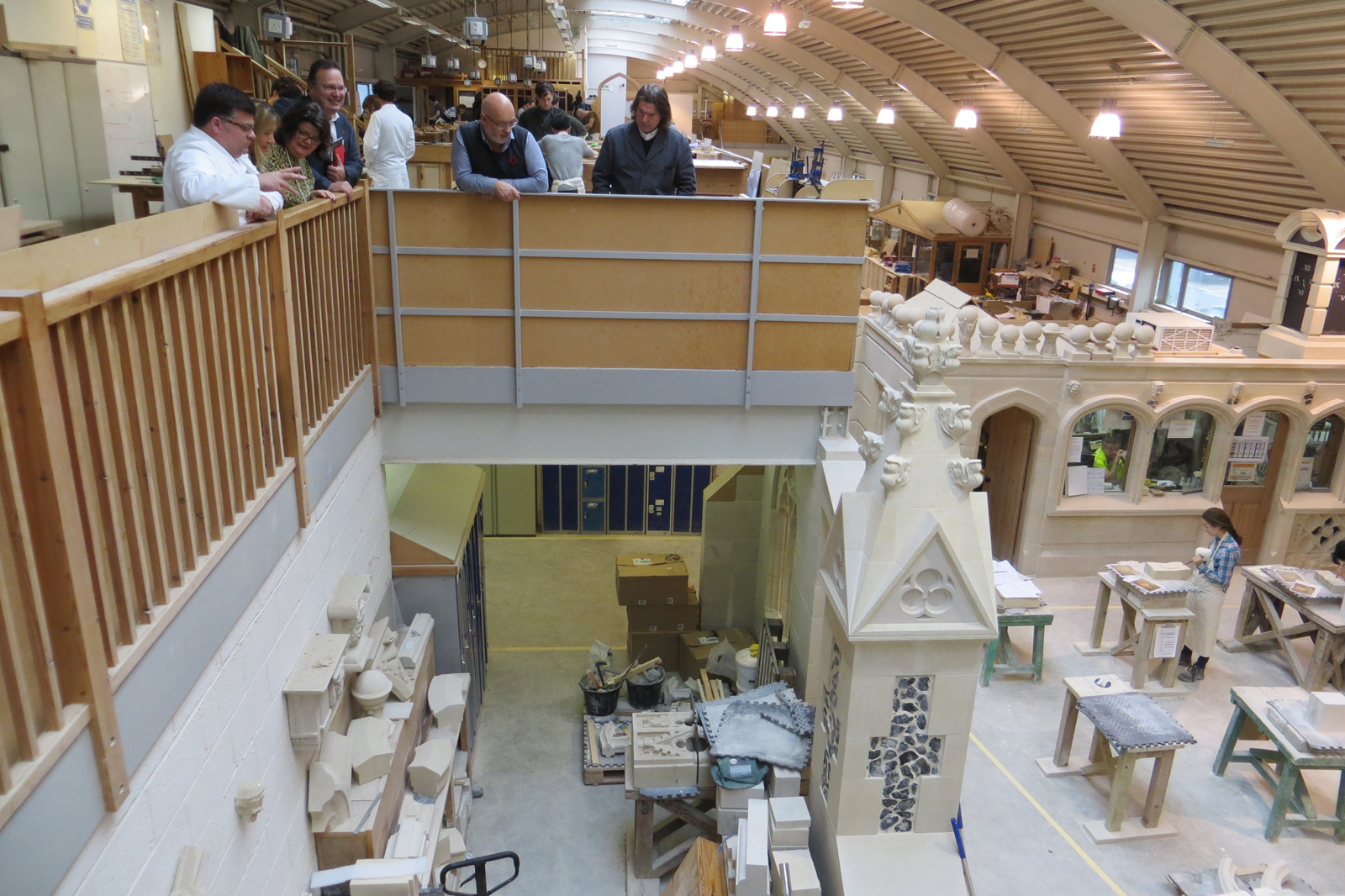Training opportunities might become an increasingly important tool in the recruitment armoury of companies if the jobs market continues to tighten. For the Stone Industry, the Natural Stone Industry Training Group and Stone Federation's Stone Train training arm are there to help.
The CITB-funded Natural Stone Industry Training Group (NSITG) held its annual meeting at the Building Crafts College in Stratford, London, on 5 November, when its Training Officer, Claire Wallbridge, said that from September she has also become the manager of Stone Train.
Claire says her initial aim is to get Stone Train accredited as an Approved Training Organisation, so that it can apply for grants on behalf of companies training with it.
NSITG co-ordinates training and creates the standards for qualifications while Stone Train delivers training.
A major project being undertaken by NSITG for more than two years now is the development of the government's new Trailblazer Apprenticeships in stonemasonry.
The government has claimed exclusivity on the word 'apprenticeship', which means what used to be the Specialist Apprenticeship Programme of stonemasonry skills is now renamed as the Specialist Applied Skills Programme, although still known by the initials SAP.
Michelle Turner of Stone Restoration Services chairs NSITG and has led the development of stone's Trailblazer Apprenticeships. She expects them to be finished next year, ahead of the deadline set by the government of April 2020.
There will be Level 2 and Level 3 versions. They come in five forms covering various aspects of the trade: interior fixing; exterior fixing; banker masonry; memorials (being developed in co-operation with the National Association of Memorial Masons); and Heritage.
Within those catergories are 20 modules, some common to all and some specific to the individual disciplines of the Apprenticeship.
The Government has insisted that the apprenticeships will include courses away from the workplace and that there must be some kind of final independent assessment by someone other than those who have delivered the training, which has left an opening for people in the industry to qualify as assessors.
The government is leaving it up to each industry sector to devise its own apprenticeships so they satisfy the needs of employers and trainees, although the process is being overseen by a government appointed Apprenticeship Officer.
There have been a number of different individuals who have been the Apprenticeship Officer working with NSITG on the development of its Trailblazers. The current Officer was due to attend the NSITG annual meeting but was unable to make it as she had been sent on a training course of her own.
One of Michell's complaints about the new apprenticeships for stone is that the government wants to include them among the crafts, whereas the industry wants them to be considered part of construction.
At the same time as the Trailblazers are being developed, CITB is reviewing the short courses that it backs with grants. Darren Lawrence, now Standards & Qualifications Supervisor at CITB, explained the process to the NSITG.
As far as CITB is concerned, short courses can be anything from three hours to 29 days, as long as they do not in themselves lead to a qualification, although those for stone contribute to the Stone Fixing and Heritage Stone SAPs.
The courses that qualify for grants are included in a CITB directory, and only those courses in the directory are grant funded. The current review of the courses gives the industry an opportunity to amend the existing courses and develop new ones.
To be eligible for CITB grants, companies have to be registered with CITB. Most stone companies are not registered because they think it will involve paying the training levy and tie them up in a lot of red tape. But most stone companies would not be large enough to incur the levy and while there is undoubtedly red tape involved in dealing with CITB (and its website is not the easiest to negotiate or use to find answers to your queries), familiarity reduces the level of frustration.
And the industry might find it advantageous to engage in training in order to attract the people it needs to grow and prosper after Brexit in March.
There is a good number of foreigners, especially from eastern Europe, working in the stone industry in the UK. But eastern Europeans are going home. For the first time since the so-called EU8 eastern European states joined the EU in 2004, this year saw more leave the UK than arrive. Many stone companies are already finding it hard to recruit skilled people.
After Brexit it will be harder for Europeans to come to the UK, which can only increase pressure on a labour market that already employs more people than ever before, has the lowest unemployment rates since the early 1970s and a record number of job vacancies.
And the workforce is aging. According to the Office for National Statistics, in construction there was a 13% increase to 47% of workers aged 45 and over between 1991 and 2011. That profile could show a rapid increase in age if eastern europeans continue to leave because they tend to be the younger people in the industry.

